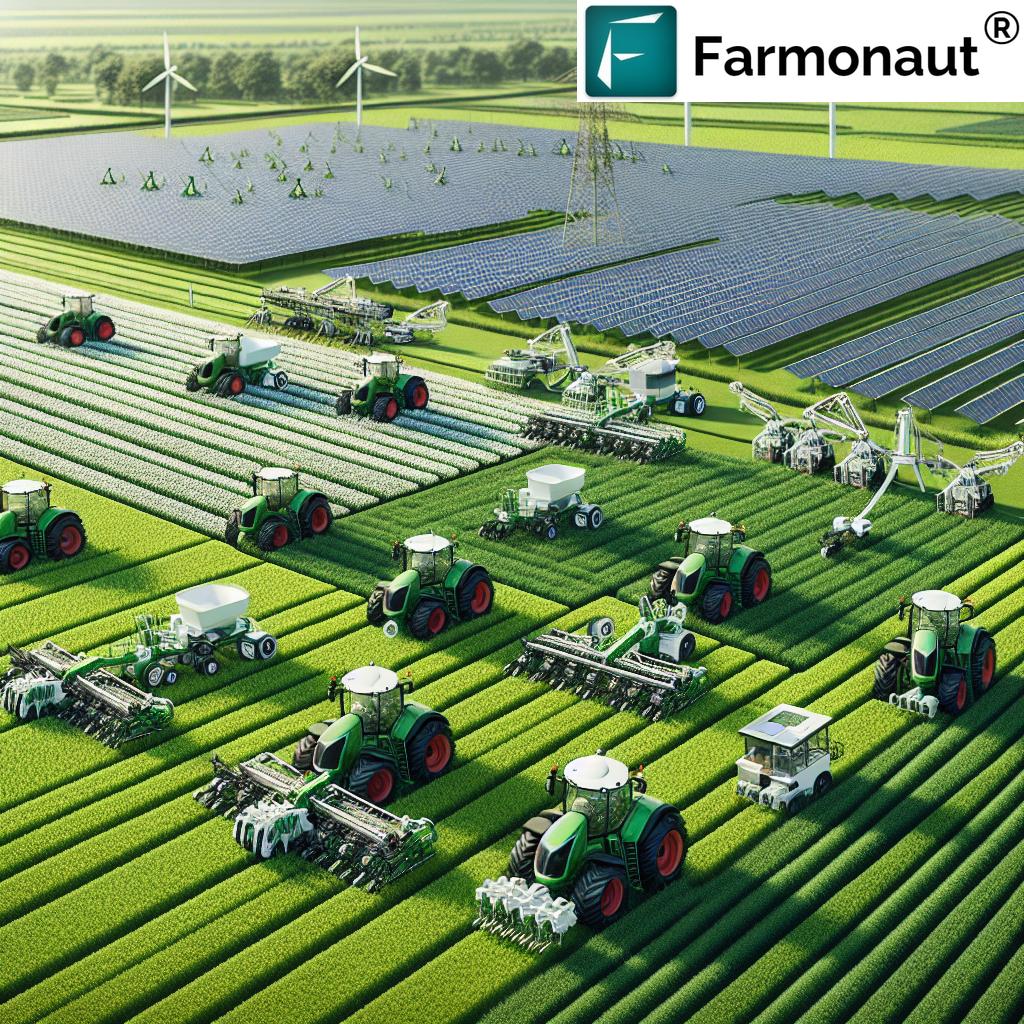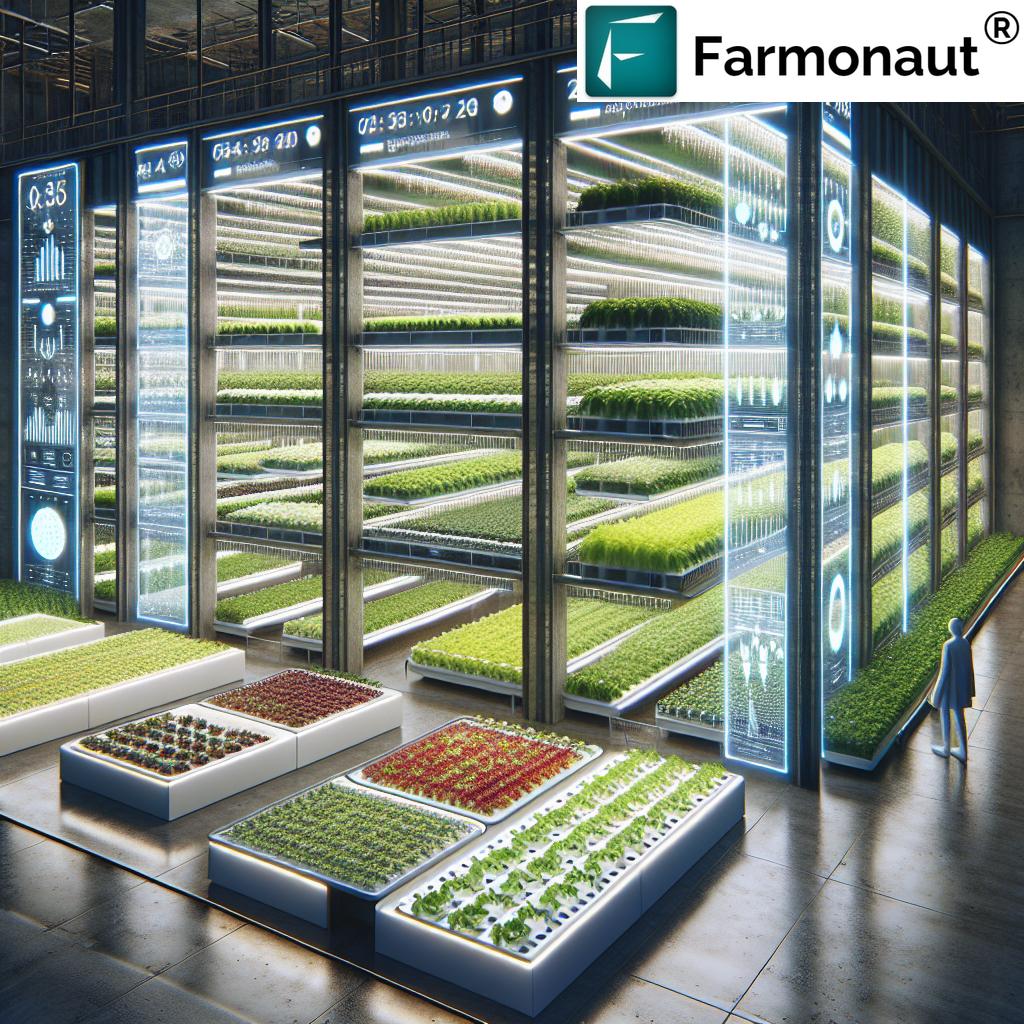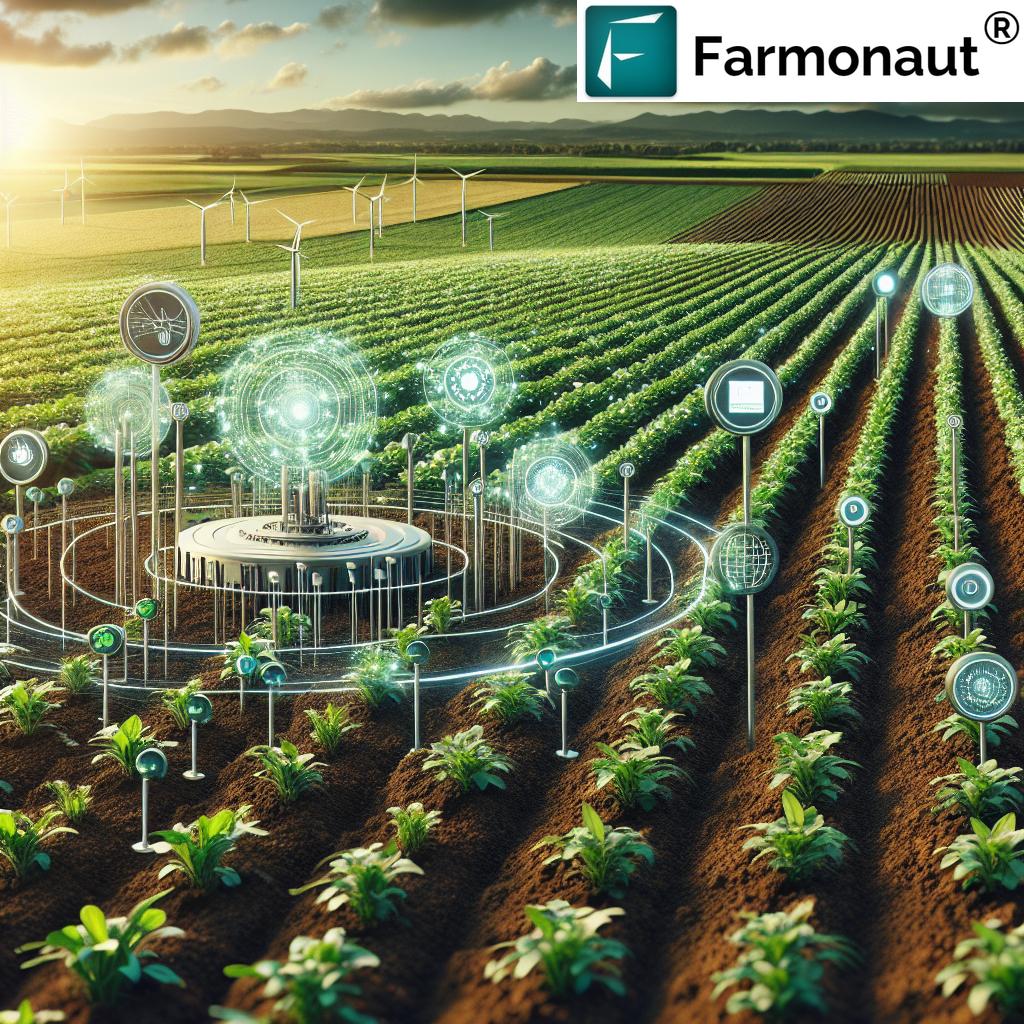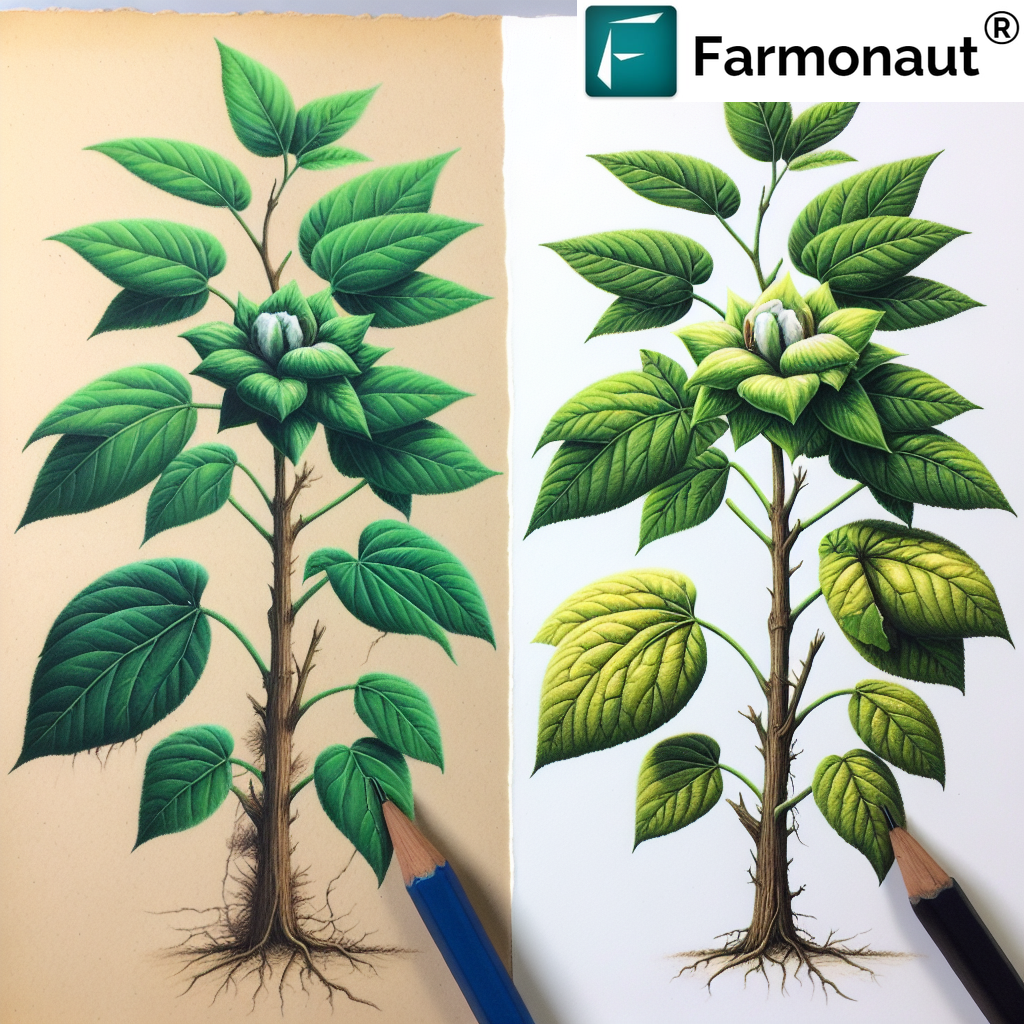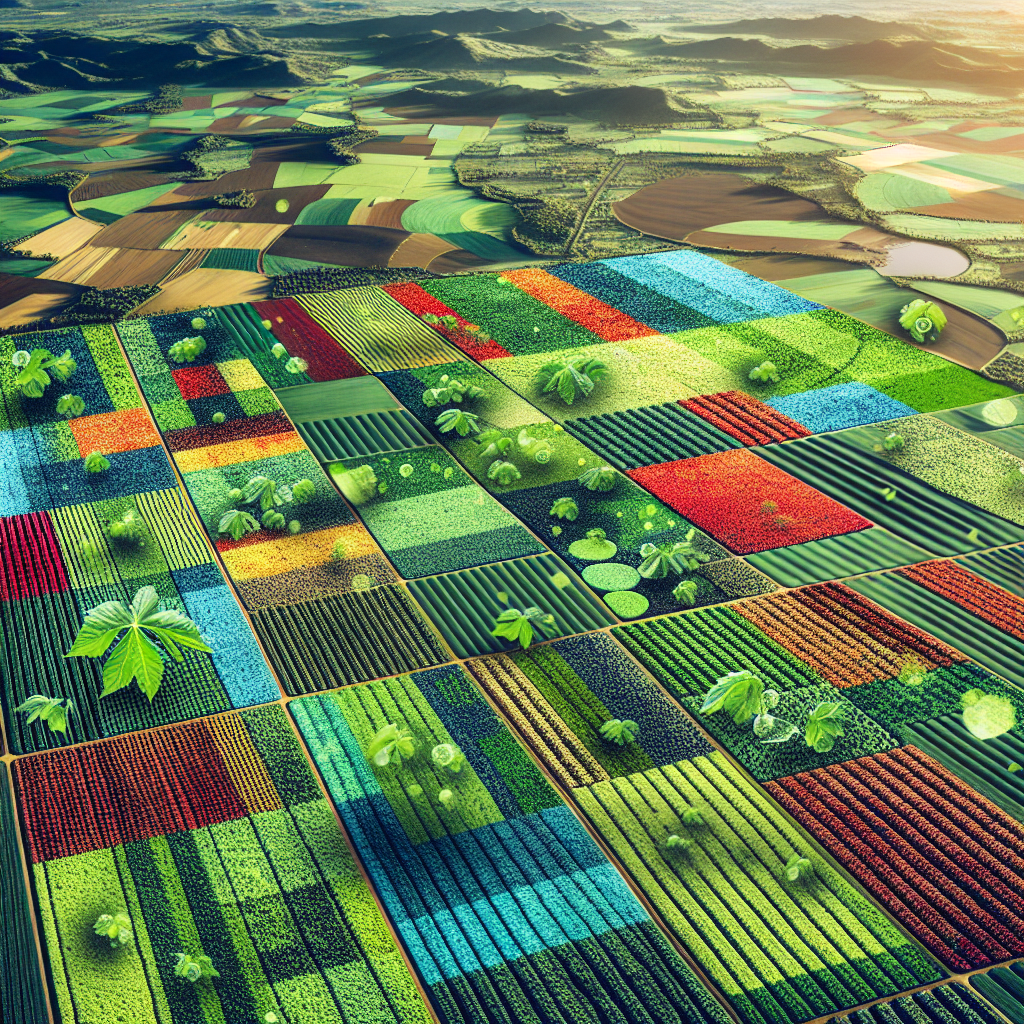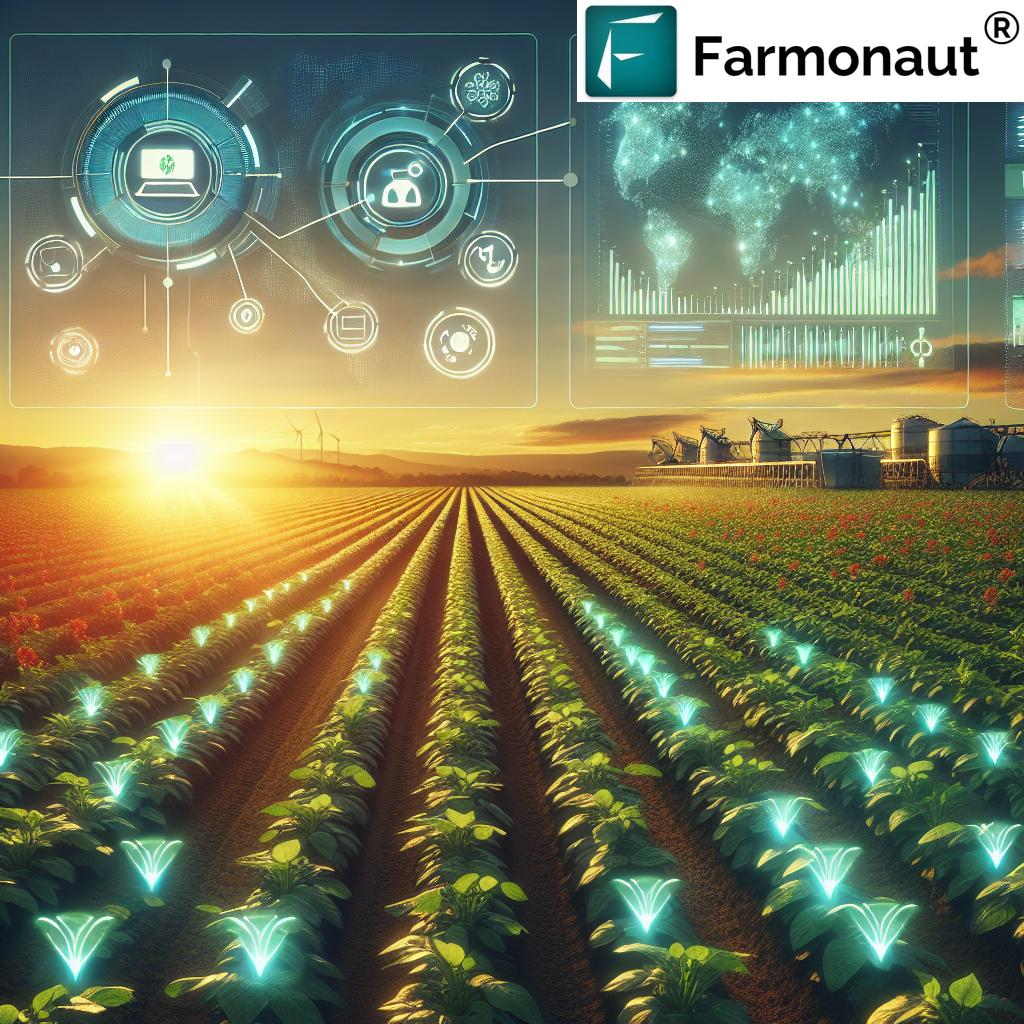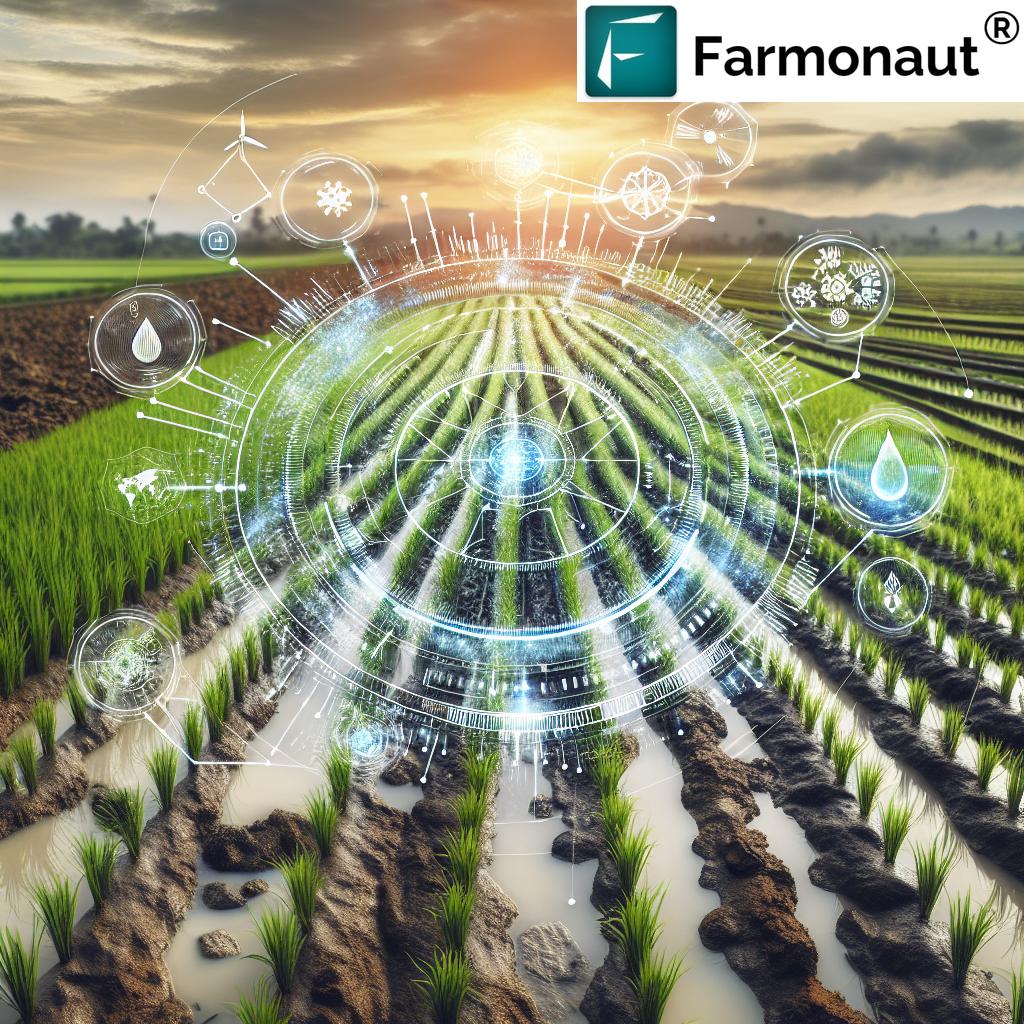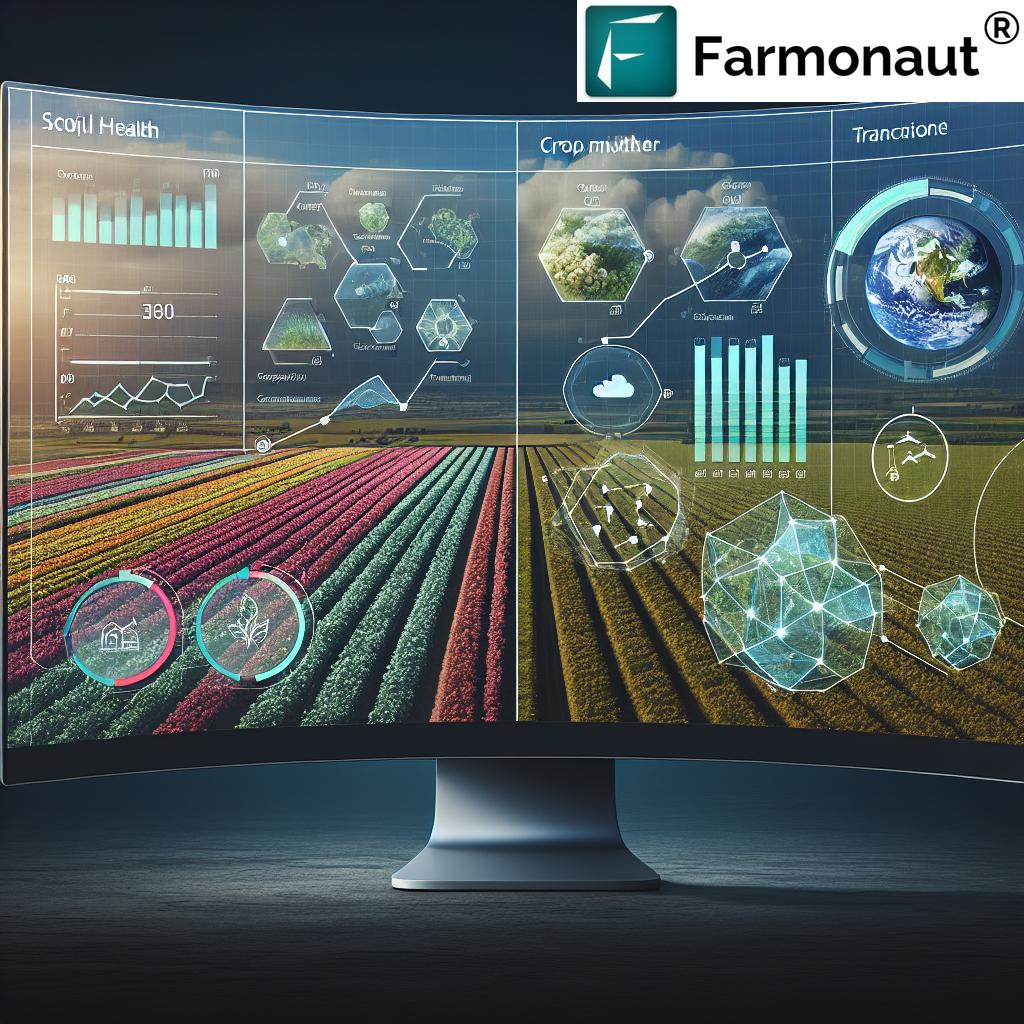Farming Technology Trends 2025: Top Innovations India
“By 2025, AI-powered precision agriculture is projected to increase crop yields in India by up to 30%.”
The Indian agricultural sector is witnessing a profound transformation driven by an exciting array of technological innovations. These emerging trends—from precision agriculture and the advent of autonomous farming equipment to integrating AI in agriculture—are dramatically reshaping how we farm, monitor soil and crop health, optimize resource use, and care for our environmental health. This transformation is setting the stage for sustainable farming practices that promise increased efficiency, higher productivity, minimized costs, and a healthier planet.
In this comprehensive guide, we explore the top farming technology trends in India for 2025. Whether you’re a farmer, agri-business, policymaker, or investor, understanding these trends will empower you to participate in the next wave of agricultural progress.
Introduction: India’s Agricultural Transformation in 2025
As of June 2025, India stands at the forefront of a digital-led agricultural revolution. Precision tools, data-driven management, and sustainable solutions are becoming standard across every region—enabling Indian farmers to overcome traditional challenges such as climate volatility, rising labor costs, and the growing demand for food security. Rural farmers and large agribusinesses alike are adopting intelligent, automated systems that enhance performance, improve soil conditions, reduce waste, and protect environmental health.
The next sections reveal the most significant trends catalyzing this change and provide the latest, practical insights—rooted in real, factual advancements and supported by valuable resources.
1. Precision Agriculture and Autonomous Machinery
The adoption of precision agriculture represents a paradigm shift in Indian farming, moving from broad, manual practices to precision-driven, data-intensive methods. This approach leverages sensors, drones, satellites, and GPS-guided equipment to monitor and manage every aspect of farm operations, such as planting, fertilization, and harvesting.
Autonomous farming equipment is now increasingly accessible to Indian farmers—ranging from driverless tractors and harvesters equipped with AI to multi-functional drones for monitoring and spraying pesticides and fertilizers. By optimizing resource use, enabling precise application of inputs, and minimizing labor costs, these innovations help reduce environmental impact while improving productivity.
- Example: As per recent reports, brands like John Deere now operate autonomous machinery fleets in India that can work efficiently in large fields, requiring minimal manual intervention.
- Benefits: Higher yields, conversion of data to actionable insights, reduced wastage, minimized input costs, and enhanced farm management.
Precision agriculture empowers farmers to grow more with less—supporting both economic and environmental sustainability.
2. Artificial Intelligence (AI) and Machine Learning in Agriculture
AI in agriculture is one of the biggest technological drivers transforming today’s rural landscape. Indian smallholder farmers and commercial producers are using artificial intelligence and machine learning platforms to analyze massive datasets—including soil conditions, crop health, and weather patterns—and to gain timely, actionable insights.
- AI-driven advisory systems assist farmers with personalized recommendations on which crops to plant, when to irrigate, and how to optimize resources.
- Predictive modeling enables forecasting of yields and early detection of pest or disease outbreaks—enhancing resilience against climate unpredictability.
- Machine learning algorithms help in analyzing satellite and sensor data, offering precise insights at the farm and field level.
In India, the impact of AI is seen in the reduction of debts, optimized input use, and improved financial health for thousands of smallholder farmers.
For those interested in how AI-based advisory and carbon footprint tracking can improve sustainability, Farmonaut provides advanced tools that combine satellite data analysis with real-time crop health notifications to help farmers reduce emissions and boost yield.
3. IoT Integration for Smart Farming Operations
Internet of Things (IoT) integration is reshaping agricultural operations in India, where internet-enabled sensors continuously capture data on soil moisture, weather, water usage, equipment status, and even livestock behavior.
- Smart irrigation systems: Automated, sensor-driven irrigation optimizes water distribution, conserving this precious resource and ensuring crops receive just the right amount at the needed time.
- Livestock monitoring: Wearable sensors and IoT networks provide early alerts about animal health, helping detect disease and improve management.
- Equipment performance: IoT-based systems track machinery operation and proactively flag the need for maintenance, reducing downtime and extending equipment life—Fleet Management from Farmonaut brings these benefits to Indian agribusinesses.
Integrating IoT with other digital innovations—such as AI advisory tools and satellite crop monitoring—creates a data-rich ecosystem for smarter, more efficient farm management.
4. Blockchain in Food Supply Chain Transparency
Blockchain technology is rapidly becoming foundational for supply chain integrity in the agricultural sector. “Blockchain in food supply chain” ensures each step of food’s journey—from seed to plate—is recorded, validated, and transparent.
- Traceability: Consumers, food processors, and retailers can track products’ origin, ensuring authenticity and reducing fraud.
- Food safety: Instant access to batch histories facilitates rapid recalls in case of contamination, improving food safety.
- New markets: For farmers, transparent records help access global markets and obtain better prices.
Our Farmonaut Blockchain-based Traceability solution empowers Indian producers and exporters to confidently showcase their products’ ethical, sustainable, and verified supply chains.
5. Agrivoltaics Technology: Solar Energy Meets Agriculture
Agrivoltaics technology is at the intersection of energy and agriculture—allowing Indian farmers to produce crops while generating solar power on the same land. By installing solar panels above fields:
- Dual income: Farmers earn revenue from surplus energy in addition to crop production.
- Improved microclimate: Panels provide shade, helping regulate temperature and water retention in crops below (especially vital in hot states such as Maharashtra and Rajasthan).
- Sustainability impact: Agrivoltaic systems reduce water evaporation, enhance land efficiency, and promote adoption of renewable energy.
In India, increasing government incentives and the growing demand for sustainable energy are making agrivoltaics a promising avenue for rural prosperity.
6. Vertical Farming Solutions & Controlled-Environment Agriculture
As urbanization accelerates and arable land becomes scarcer, vertical farming solutions and controlled-environment agriculture (CEA) are rising as sustainable answers to urban food production challenges in India.
- Hydroponics and Aeroponics: Soilless systems grow vegetables, leafy greens, and even fruits with minimal water and zero pesticides.
- Stacked production: Vertical farms use LED lighting and AI-driven controls to optimize growth conditions across multiple shelves—boosting yield per square meter.
- Urban solutions: Fresh, healthy produce is delivered to city markets, slashing transport costs and reducing spoilage.
In Mumbai, Bengaluru, and Delhi, vertical farms are already supplying a significant share of leafy greens and herbs to urban populations—demonstrating the future of food security for Indian megacities.
“Over 60% of Indian farmers are expected to adopt sustainable farming technologies by 2025.”
7. Regenerative Agriculture Techniques and Sustainable Practices
Regenerative agriculture techniques are gaining momentum across Indian fields as farmers recognize the urgent need to restore soil health, enhance ecosystem biodiversity, and sequester carbon. These sustainable farming practices improve productivity and ensure the viability of farms for generations to come.
- No-till farming and cover cropping reduce soil erosion, increase organic matter, and promote beneficial microorganisms.
- Agroforestry incorporates trees and shrubs into fields for shade, wind protection, and habitat for pollinators.
- Focus on long-term health: Such practices not only increase yield and resilience but also contribute towards India’s targets for climate change mitigation and food security.
Regenerative approaches are recommended in arid zones (Gujarat, Rajasthan), flood-prone regions (Assam, Bihar), and across all major cropping systems.
For those interested in leveraging technology for sustainable, carbon-neutral farming, explore Farmonaut’s advanced carbon footprinting & sustainability monitoring tools.
8. Sustainable and Biodegradable Growing Media
The shift toward biodegradable growing media is an essential part of India’s transition to sustainable crop production. Traditional peat-based substrates have environmental drawbacks, leading to the adoption of peat-free alternatives such as:
- Coconut coir (abundant in southern India)
- Hemp fibre and wood-based substrates
- Compostable, plant-based seed trays and pots
These materials support circular economy models in horticulture, reduce plastic waste, and align with Indian and global sustainability targets.
9. Robotics in Harvesting and Soil Analysis
Robotics in harvesting and soil analysis is a fast-growing innovation empowering Indian farmers to achieve precision and speed at scale. Modern farm robots offer:
- Automated field & soil scanners: Conduct detailed field analysis (pH, organic matter, nutrient levels), enabling data-driven fertilizer decisions.
- Harvesting robots: Mechanically pick delicate fruits (tomatoes, strawberries) or sort grains at harvest, significantly reducing labor costs and post-harvest losses.
These advancements make farming operations more efficient and scalable, especially as the rural workforce contracts and demand rises for high-quality produce.
Explore how these innovations can integrate with real-time monitoring—visit Farmonaut’s large-scale farm management platform.
10. Digital Twin Technology in Agriculture
Digital twin technology in agriculture creates virtual replicas of farms, equipment, and processes. By running simulations, farmers can optimize planting schedules, forecast yields, and manage risks without expensive, real-world field trials.
- Scenario analysis: Test new crops, irrigation methods, or fertilization strategies virtually before implementation.
- Synthetic data: Generate large datasets for AI training and for predictive modeling in precision agriculture.
- Sustainability: Streamlined decision-making means less input waste, reduced emissions, and higher efficiency at scale.
As this technology becomes more affordable in India, both large agri-corporates and cooperatives can use digital twins to enhance farm performance and resource stewardship.
Comparative Feature Table: 2025’s Top Farming Innovations
| Technology / Innovation | Key Features | Estimated Adoption Rate in India (2025) | Potential Yield Increase (%) | Impact on Environmental Health | Est. Implementation Cost (₹/hectare) |
|---|---|---|---|---|---|
| Precision Agriculture (Autonomous equipment, remote sensing) |
Real-time monitoring, GPS guidance, data-driven applications | 45–55% | 20–30% | High—reduces inputs, minimizes runoff | 4,000 – 30,000 |
| AI & Machine Learning | Predictive analytics, crop and soil health assessments, automated alerts | 30–40% | 15–25% | Medium—improves resource allocation | 2,500 – 12,000 |
| IoT Integration | Smart irrigation, sensor-based monitoring, livestock tracking | 25–35% | 12–18% | High—optimizes water/energy use | 5,000 – 20,000 |
| Blockchain for Supply Chain | End-to-end traceability, fraud reduction, export opportunities | 8–12% | Up to 10% | Medium—improves transparency | 2,000 – 8,000 |
| Agrivoltaics Technology | Dual land use, solar panel shading, extra income | 3–8% | 5–12% | High—boosts renewables, saves water | 30,000+ |
| Vertical Farming/CEA | Multi-layer crops, soilless, low pesticide use, climate control | 3–6% | Up to 50% | High—urban, minimized waste | 60,000+ |
| Regenerative Practices | No-till, crop rotation, agroforestry, soil restoration | 18–22% | 10–18% | Very High—restores ecosystems | 3,000 – 10,000 |
| Biodegradable Growing Media | Peat-free, compostable, renewable resources | 16–24% | 5–12% | High—reduces pollution | 500 – 2,000 |
| Robotics (Harvest & Analysis) | Automation, data collection, labor savings | 10–15% | 8–20% | Medium—reduces chemical use | 20,000 – 60,000 |
| Digital Twin Technology | Simulations, scenario planning, operational optimization | 2–7% | 5–10% | High—efficient resource use | 8,000 – 25,000 |
Farmonaut’s Role in Precision Agriculture & Sustainability
At Farmonaut, we believe that every Indian farmer—from smallholder cultivator to corporate agribusiness—deserves access to cutting-edge farm management solutions that improve yield, profitability, and environmental stewardship. Our mission is to make precision agriculture affordable and accessible for all.
Our Key Technologies and Solutions
- Satellite-Based Crop Health Monitoring: We use multispectral satellite imagery to provide detailed insights into crop health, soil moisture, and nutrient levels—enabling Indian farmers to optimize irrigation, fertilization, and pest management.
- AI-Based Crop Advisory (Jeevn AI): Our AI-driven advisory system delivers real-time farming advice, weather forecasts, and risk alerts—Available across Android, iOS, and Web.
- Blockchain Traceability: Producers and corporate buyers enjoy transparent supply chain solutions for brand trust and export eligibility using Farmonaut’s product traceability.
- Fleet & Resource Management: Track & optimize farm machinery, fuel use, and logistics—reducing operational costs for agribusinesses.
- Carbon Footprinting: Monitor and reduce your environmental impact with live data on GHG emissions and sustainability actions.
- API Access: Developers and businesses can integrate our satellite data and analytics into their own platforms—visit our API hub and check the developer docs.
Our subscription-based business model is flexible, scalable, and suited for individual farmers, cooperatives, large agribusinesses, government agencies, and the financial sector (see details below).
We empower Indian farmers to reduce input waste, enhance yield, access credit (with satellite-based farm verification for loans & insurance), and achieve global standards of sustainability and transparency in the food supply chain.
Why Farmonaut?
- Affordable, real-time precision agriculture (no costly drones or hardware)
- Data-driven decisions: Sat imagery, IoT, and AI integration for best results
- Full support for both smallholders and large plantations
- Environmental sustainability at core—tools for carbon management and regenerative practices advisory
Farmonaut Subscription Plans
Want to unlock advanced satellite crop monitoring, AI-based advice, and more for your farm in India? Explore our flexible subscription packages for farmers, cooperatives, and agribusinesses:
Not sure which plan is right for you? Start now with our app and get your first field analysis!
Frequently Asked Questions (FAQ)
What is the impact of AI on Indian farming by 2025?
AI in agriculture delivers personalized decision support, increasing yields by up to 30% for adopters and providing actionable insights for smallholder and commercial farmers alike.
How does precision agriculture reduce environmental impact?
Precision agriculture uses data-driven applications and autonomous machinery to minimize inputs like water, fertilizers, and pesticides, resulting in lower chemical runoff and energy savings. This enhances both farm productivity and environmental health.
Can smallholder farmers use satellite and AI-based solutions?
Yes! Farmonaut and similar platforms make such technology affordable and accessible for small-scale Indian farmers—no expensive drones or hardware required. Services can be accessed on smartphones or basic web browsers for real-time crop, soil, and weather insights.
Why is blockchain important for food supply in India?
Blockchain-based traceability brings end-to-end transparency from the field to the consumer, helping producers access premium markets, meet export standards, and quickly resolve food safety issues.
What is the typical adoption rate for agrivoltaics in India?
Agrivoltaics technology is expanding, especially in sun-rich states. By 2025, 3-8% of large and progressive farms are expected to deploy dual-use solar panels alongside crops—driven by government incentives and sustainable energy demand.
Are these innovations only for large farms?
While some technologies (like robotics or full digital twins) currently favor larger operations, most—especially satellite, AI-advisory, and traceability platforms—are designed for farms of any size.
Conclusion: Embracing Transformative Agriculture Technology Trends in India—2025 and Beyond
The convergence of precision agriculture, AI in agriculture, blockchain in food supply chain, and other digital innovations is forging a more resilient, efficient, and sustainable Indian farming sector. From soil health analysis and robotics in harvesting to vertical farming solutions and agrivoltaics technology, these trends directly address the needs of today’s farmers—improving management strategies, boosting yields, and safeguarding our natural environment.
For Indian farmers, experts, and business leaders, keeping pace with these technological advancements is not optional—it’s the key to remaining competitive, climate-resilient, and profitable in a fast-evolving sector.
Whether you wish to enhance productivity, reduce costs, access new markets, or simply manage your farm smarter, adopting these solutions prepares you for the agriculture of 2025 and beyond.
Ready to unlock the future of farming in India? Get started with Farmonaut and discover the most powerful digital tools ever designed for Indian agriculture!


